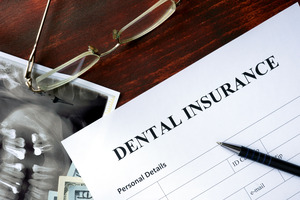
Insurance can always be a little bit tricky to navigate, and dental insurance in particular often leaves patients scratching their heads. In addition to all the rules and provisions you may be used to from your medical coverage, dental plans tend to have other rules that can catch patients off guard.
Knowing how best to make use of your dental coverage is important if you’re trying to effectively take care of your oral health. Here are a few things you should know about how you can use your dental plan most effectively.
Coverage Types
Dental insurance plans generally cover preventive, basic, and major procedures. Preventive care, like cleanings and exams, is often fully covered or requires a small copayment. Basic procedures, such as fillings and extractions, typically involve cost-sharing between the insurance company and the patient, often with the insurer covering 70-80%. Major procedures, including crowns, bridges, and orthodontics, usually have lower coverage percentages, with the patient shouldering a higher portion of the cost. It’s important to review your plan’s specific coverage details to understand which treatments are included and at what percentage.
Network Dentists
Dental insurance plans often have a network of preferred providers. These network dentists have agreed to provide services at reduced rates, helping to lower out-of-pocket costs for patients. Visiting an in-network dentist usually results in lower copayments and no balance billing (charging the patient the difference between the provider’s fee and what the insurance pays). Out-of-network dentists may charge higher rates, and the insurance company may cover a smaller percentage, leading to higher out-of-pocket expenses. Always check if your dentist is in-network to maximize your benefits.
Annual Maximums and Waiting Periods
Most dental insurance plans have an annual maximum benefit, which is the maximum amount the insurer will pay for covered services within a plan year. Once this limit is reached, any additional dental expenses must be paid out-of-pocket by the patient. Annual maximums typically range from $1,000 to $2,000. Additionally, some plans have waiting periods for certain procedures, especially major ones. This means you must be enrolled in the plan for a specified period (e.g., six months to a year) before the insurance will cover these services. Understanding these limitations can help you plan your dental care and avoid unexpected costs.
About the Author
Dr. Henry Lu’s goal as a dentist is to help as many people as possible really feel good about their teeth. That’s why he endeavors to make his dental care both accessible and comfortable for his patients—so that he can help the most people he can. Dr. Lu received his dental degree from the Nova Southeastern University College of Dental Medicine, and in the interest of continuing his education, he is a member of both the American Dental Association and the Texas Dental Association.
If you have any questions about dental insurance, he can be reached at his website or by phone at (469) 998-9822.
